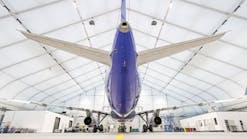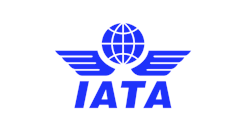It’s a smart world – smart phones, smart cars and smart homes are not the way of the future but the way of life. It only makes sense that airports would follow suit. While it may seem daunting to take the complexities of an airport and make them smart – being able to connect to a network and be interconnected, share and interact remotely – the software exists. Airports no longer need be on the sideline of smart.
The software is called Honeywell NAVITAS. Made by Honeywell, Honeywell NAVITAS takes all aspects of an airport’s operations and houses them under one roof.
“Airports around the world are seeing a striking increase in traffic, which increases complexity to ensure safe, reliable, and efficient operations. Honeywell Honeywell NAVITAS helps orchestrate complex environments through mobile applications and dashboards that are intuitive. It harnesses the power of IoT (Internet of Things) to make data user friendly and make airports smarter in the process,” said Sonja Strand, Global Manager Global Airport Business at Honeywell.
Strand said that Honeywell NAVITAS, designed by the Honeywell User Experience (HUE) team, is made with the philosophy that: “Good technology serves the needs of the people who use it. It does not force them to adapt to its limitations.”
“From concept to creation, our airport software is designed to fulfill this principle,” Strand continued. “ Honeywell NAVITAS was created to help streamline and inform the meticulous work of engineers, technicians, air traffic controllers, and security personnel to ultimately help passengers get where they need to go on a daily basis.”
With that in mind, the Honeywell NAVITAS suite is not a one size fits all software – it’s made of different modules tailored to the area of the airport where it will be utilized.
Those modules are:
- Honeywell NAVITAS Tower Manager, which helps improve the productivity of air traffic controllers by enhancing situational awareness of airport surface operations. It gives controllers access to rich, real-time information on ground, air traffic and meteorological conditions, presenting the information in a single, easy-to-use interface, and providing visibility into a multitude of traffic events while reducing the chance for error.
- Honeywell NAVITAS Surface Manager, which enhances ground traffic safety, fluency and throughput in a wide range of weather conditions, while helping to reduce fuel burn and carbon footprints. The module also provides the software necessary for airports to use all four levels of an Advanced-Surface Movement Guidance and Control System (A-SMGCS), including surveillance, routing, guidance and airport safety support, along with enhanced movement conflict detection and resolution, which can include “follow-the greens”-based guidance that automatically illuminates lighting on the tarmac to guide aircraft to clear taxiways.
- Honeywell NAVITAS Engineering Manager, a tool for engineers and technicians to manage maintenance. It enables them to effectively monitor system health, easily perform fault diagnostics and streamline workflows, which also often helps reduce operational costs. It features a mobile interface and automates the diagnostics and failure reporting, while simplifying manual tasks and reducing paperwork, giving personnel better visibility into the availability, reliability and performance of airside systems.
- Honeywell NAVITAS Performance Manager, a module accessible both on premise and remotely that features dashboards that allow airport staff to collaborate and analyze operations in line with key performance indicators. The module provides access to a common base of holistic information and allows for the application of big data analytics for real-time and predictive insights, often enabling more efficient and informed decision-making.
For installation, airport size doesn’t matter and existing infrastructure/ software doesn’t matter.
“Existing third-party software is integrated. Examples of this could be Airport Operational Databases (AODB), Flight Information Systems and others,” said Strand. “The software suite is scalable to the individual needs of an airport. For example, if an airport installs Honeywell NAVITAS and expands, we can easily upgrade with the latest available features and customize the features as required.”
And airports are not forced to purchase the entire suite package, instead being able to pick and choose which of Honeywell NAVITAS’ suites work best for their current operations.
“Not all airports are green field airports which can install a full software suite from a single supplier. Most airports have legacy systems, which they want to retain. Honeywell took that into consideration when we designed and developed Honeywell NAVITAS and made it scalable and adoptable. Every single module can be brought to site independently,” explained Strand.
And the benefits Honeywell NAVITAS brings to an airport aren’t only enjoyed by just the staff and personnel, but translate into an improved passenger experience, as well.
“Because solutions like Honeywell NAVITAS approach data comprehensively and holistically, it can translate all this fragmented information into real-time, actionable insights. This ultimately benefits passengers by ensuring that their travel experience is paired with enhanced security, timeliness and overall smoother operations in-flight, as well as during takeoff and landing. Passengers are the ones who benefit most as all the modules work together to create a safe experience with arrivals and departures on schedule,” Strand said.





